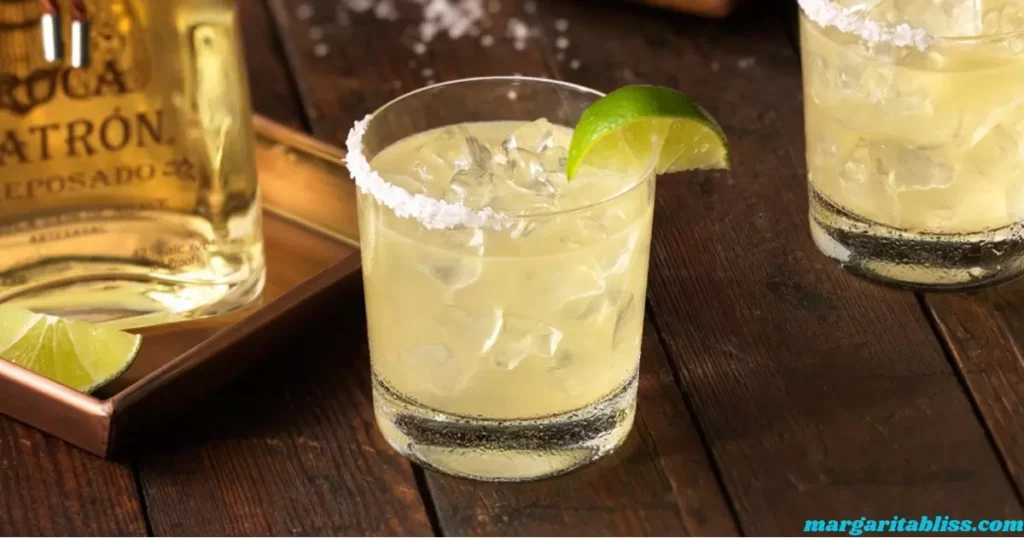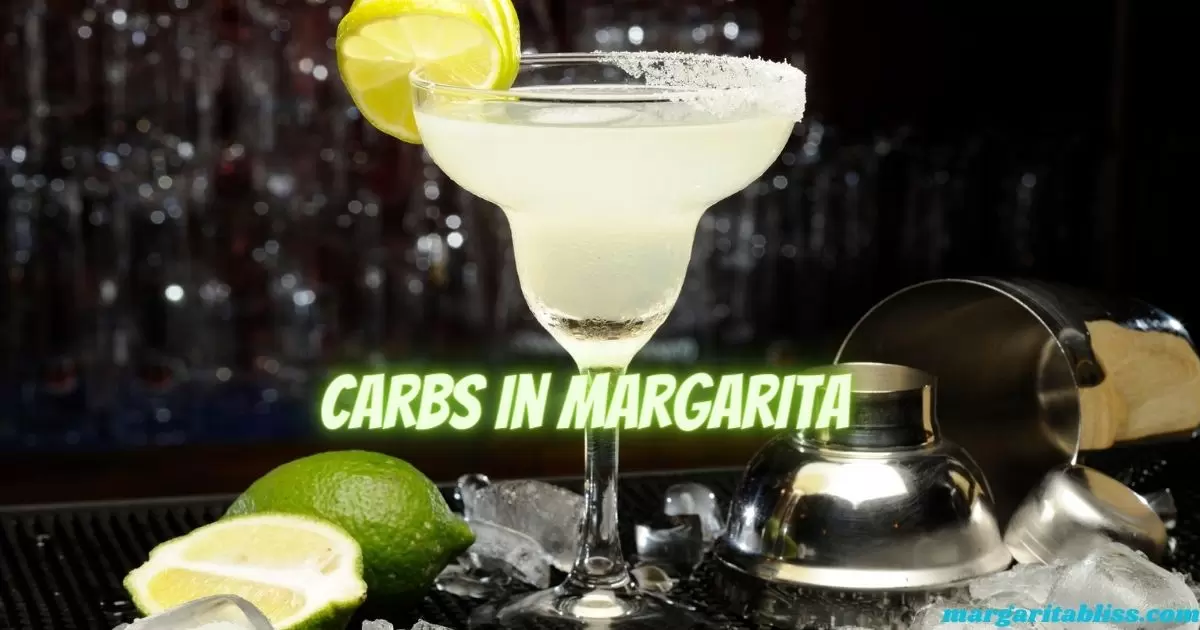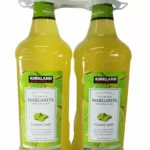Carbs in a margarita refer to the carbohydrates found in this popular cocktail. These carbs mainly come from the sweet ingredients like sugar syrup and triple sec. The exact amount can vary based on the recipe, but typically, a margarita has a moderate amount of carbs. It’s important for those monitoring their carb intake to consider this when enjoying the drink.
When enjoying a refreshing margarita, you might wonder, How many carbs are in this drink? Carbs in margaritas come from sweeteners and liqueurs, and the total count can vary. Knowing the carb content helps manage dietary needs while savoring your favorite cocktail.
Margaritas, with their tangy and sweet flavors, do contain carbs. These carbs come from ingredients like sugar and orange liqueur. For those keeping an eye on their carb intake, understanding the carb content and the margarita mix shelf life in a margarita can be quite helpful while still enjoying this popular beverage.
Explanation of carbohydrates and their role in the diet
Carbohydrates are a primary energy source for the body, found in a variety of foods including fruits, vegetables, grains, and sugars. They are essential for proper bodily functions, providing the fuel necessary for physical activity and brain function.
In the diet, carbs are classified into simple sugars, complex carbs, and dietary fibers, each affecting the body differently. It’s important to understand how carbs interact with the body, especially when managing weight or blood sugar levels.
How carbs are present in alcoholic beverages
Carbs find their way into alcoholic beverages through various ingredients. In margaritas, for instance, carbs primarily come from sweeteners like sugar and triple sec, as well as fruit juices. While alcohol itself doesn’t contain carbs, mixers and other additives do.
This is why some alcoholic drinks can have a high carb count. Being aware of these sources is crucial for anyone monitoring their carb intake, as it can significantly impact dietary goals and health.
Different recipes and their effect on carb content
The type of margarita you choose can greatly affect the carb content. Classic margaritas typically have fewer carbs than their flavored counterparts, which include additional fruit juices or syrups. For instance, a strawberry or mango margarita often contains more carbs due to the added fruit purees or liqueurs.
Frozen margaritas also tend to be higher in carbs because of the added sugar needed to balance the icy texture. Understanding these variations is key to making an informed choice based on your carb preferences or dietary restrictions.
Homemade vs. restaurant margaritas and carb implications
The source of your margarita can also impact its carb content. Homemade margaritas allow you to control the ingredients and their quantities, potentially reducing the carb count by opting for less sugar or substituting with low-carb sweeteners.
On the other hand, restaurant or pre-made mixes contain additional syrups and sugars, leading to a higher carb drink. This can be particularly challenging for those on strict low-carb diets, as the added carbs in restaurant versions can add up quickly. Being mindful of these differences can help you make better choices while still enjoying your favorite cocktail.
List of typical ingredients
A classic margarita is a simple yet delicious cocktail composed of a few key ingredients: tequila, lime juice, triple sec, and sugar. Tequila, distilled from the blue agave plant, forms the alcohol base of the drink. Lime juice adds a fresh, tangy flavor and is essential for the characteristic taste of a margarita. Triple sec, an orange-flavored liqueur, contributes a hint of citrus sweetness. Lastly, sugar, often in the form of simple syrup, is added to balance the tartness of the lime.
Which ingredients contribute carbs
In a margarita, the carbs primarily come from triple sec and sugar. Triple sec, being a sweet liqueur, has a high sugar content, and thus, a significant amount of carbs. The sugar or simple syrup added to the mix also directly contributes to the carb count.
Lime juice has a minimal but still notable amount of carbs, primarily from the natural sugars in the lime. Tequila, on the other hand, is carb-free. Understanding which ingredients contribute carbs allows for modifications to the recipe for those wishing to reduce their carb intake, such as opting for low-carb sweeteners or lessening the amount of triple sec.
Are margaritas high carb?
Margaritas can be relatively high in carbs, typically ranging around 10 to 20 grams per serving, with about 15 grams being common for a standard size. The majority of these carbs come from sweeteners like sugar and triple sec.
The exact count varies based on the recipe and size of the drink. While not the highest carb alcoholic beverage, those monitoring their carb intake, especially on low-carb diets, should consider margaritas as a more indulgent choice due to their sugar content.
How many calories in a lime margarita on the rocks?

A lime margarita on the rocks typically contains about 10.7g of total carbs per 4 fluid ounces. While the calorie count can vary depending on the specific recipe and ingredients used, a standard lime margarita of this size generally has around 170 to 200 calories. Factors like the type and amount of sweetener, as well as the alcohol content, can influence the total calories, making it important to consider the specific recipe when calculating the caloric content.
Homemade Margarita vs Frozen Margarita
| Drink Type | Serving Size | Calories | Total Carbohydrates | Total Sugar |
| Homemade Margarita | 4 oz (118.3 mL) | 248 | 15 g | 13 g |
| Frozen Margarita | 4 oz (118.3 mL) | 248 | 15 g | 13 g |
Conclusion
Margaritas, a popular cocktail choice, contain carbs primarily from sweeteners like sugar and triple sec. A typical serving can range from 10 to 20 grams of carbs, with variations depending on the recipe and drink size. While tequila is carb-free, additional ingredients like fruit juices and liqueurs contribute to the overall carb count.
Homemade versions offer more control over these ingredients, potentially reducing carb intake compared to restaurant or pre-made mixes. Understanding the carb content is crucial for those monitoring their intake, as even classic margaritas can be relatively high in carbs due to their sugar content.
Making informed choices about the type of margarita and its ingredients can help individuals enjoy this festive drink while managing their dietary needs, whether they’re aiming for a low-carb lifestyle or simply keeping track of their overall consumption.
FAQs
Do different types of margaritas have different carb counts?
Answer: Yes, different types of margaritas, such as fruit-flavored, frozen, or ones made with pre-made mixes, can have varying carb counts. Fruit-flavored or frozen margaritas tend to have more carbs due to added sugars and syrups.
Can I make a low-carb margarita?
Yes, you can make a low-carb margarita by using a sugar substitute, omitting sweet liqueurs, and using fresh lime juice instead of sweetened lime juice or mixes.
Are there carb-free or low-carb margarita mixes available?
Yes, there are low-carb and sugar-free margarita mixes available that significantly reduce the carb count, often containing less than 5 grams of carbs per serving.
How does the choice of sweetener affect a margarita’s carbs?
Using natural sweeteners like agave syrup will add carbs, whereas artificial or zero-calorie sweeteners can provide sweetness without the added carbs.










